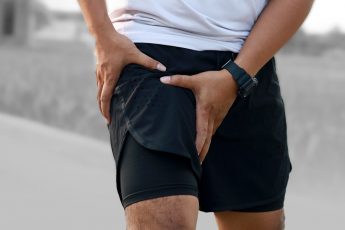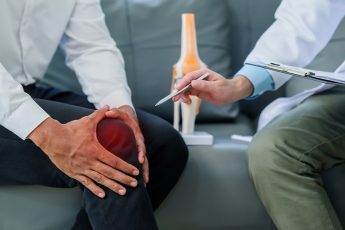Kyphosis: Causes, Symptoms & Why Early Treatment Is Crucial
Why Kyphosis Must Not Be Ignored
Our back is meant to support us, shield our nervous system, and enable us to move with power and flexibility. A healthy back has natural curves that assist with balance and shock absorption. But when these curves become exaggerated, issues can occur. One of these issues is kyphosis, a forward curvature of the upper back that may affect posture, mobility, and general health.
In Adam Vital Hospital, we regularly see patients who visit with the belief that they only have a “hunchback” or “bad posture.” In fact, they might be suffering from kyphosis, a condition that, if not addressed, will evolve. Let’s examine more closely what kyphosis is, why it occurs, and why medical intervention is necessary.
What is Kyphosis?
Kyphosis is an abnormal outward curve of the upper back (thoracic spine). A slight curve is normal, but the condition is diagnosed if the curve is greater than 50 degrees. Kyphosis can be mild and hardly visible or serious, with the spine curving into a considerable hump.
Though kyphosis is more frequently encountered in elderly people based on spinal changes that occur with age, it may also occur in teenagers and young adults. In children, it may be unnoticed until it becomes more evident with the onset of growth spurts.
Signs and Symptoms of Kyphosis
The most frequent sign of kyphosis is a noticeable curvature of the upper back, which is typically a stooped attitude. Other symptoms are:
- Forward head posture and rounded shoulders
- Back pain or stiffness
- Tiredness caused by strain in the back muscles
- Loss of height over time
In severe instances, shortness of breath due to decreased lung capacity
Most individuals first attribute these signs and symptoms to “normal aging” or bad posture. Progressive kyphosis can, however, hamper daily activities and influence the general quality of life if left untreated early.
Common Causes of Kyphosis
There are various reasons one can develop kyphosis:
Poor Posture (Postural Kyphosis)
This is the most prevalent type, particularly among teenagers and young adults who spend many hours of their day sitting with slouching backs. Although it typically doesn’t lead to dramatic structural alterations, it can get progressively worse over time if not addressed.
Age-Related Changes (Degenerative Kyphosis)
When we age, the spinal bones and discs gradually weaken. Osteoporosis, a disorder that weakens bones, can make vertebrae compress, resulting in kyphosis among older adults.
Scheuermann’s Disease
A condition that arises during adolescence, in which the vertebrae develop irregularly, forming a wedge-shaped structure rather than rectangular blocks. This structural fault leads to a more severe curve.
Congenital Kyphosis
Certain infants are born with spinal deformities that lead to kyphosis from an early age. This form tends to worsen as the child develops.
Other Causes
Kyphosis can also result from spinal injuries, infections, tumors, or neuromuscular disease that impairs muscle control and spinal alignment.
Why Kyphosis Can’t Be Ignored?
It’s easy to dismiss a slightly hunched back as mere posture, but kyphosis can have lasting effects if it goes untreated:
Chronic Pain – As the spine bends forward, muscles and ligaments become strained, leading to frequent back or neck pain.
Decreased Mobility – Severe kyphosis may impair flexibility, which causes daily activities like bending, lifting, or walking to be cumbersome.
Breathing and Gastrointestinal Disturbances – In severe forms, the curvature compresses the chest cavity, diminishing lung capacity and affecting digestion.
Psychological Consequences – Prominent spinal deformity can influence self-esteem, which may cause social withdrawal or worry.
Higher Chances of Fractures – Osteoporosis-associated kyphosis makes the vertebrae less strong, and therefore, the spine is more prone to fractures.
These issues speak for themselves about the importance of obtaining early medical advice.
Diagnosis: How is Kyphosis Diagnosed?
Diagnosis at Adam Vital Hospital starts with a physical examination to assess posture, spinal curve, and mobility. The patient can be requested to bend forward, which improves the visibility of abnormal curves.
Imaging studies like X-rays are necessary to gauge the angle of the curve. Based on the reason, physicians might also order MRI or CT scans to evaluate for spinal cord involvement or underlying diseases. Bone density tests might be ordered in older patients to screen for osteoporosis.
Final Thoughts
Kyphosis can start as a minor curve, but if not treated, it can result in severe health problems. There is good news, though, as with an early diagnosis and proper treatment, the majority of cases can be dealt with successfully. Treating it early not only corrects posture but also avoids complications such as chronic pain, respiratory issues, and decreased mobility.
If you or someone you care about experiences a rounded back, chronic stiffness, or changes in posture, don’t write it off as “normal aging” or “bad posture.” Our spine experts at Adam Vital Hospital are here to assist you in making sense of the condition and to provide effective treatment options.


